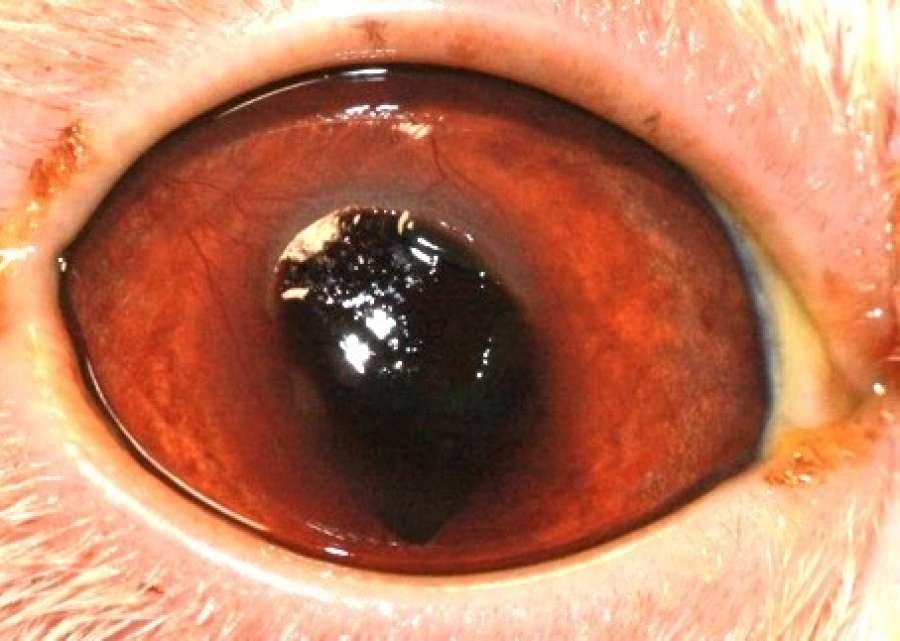Corneal Sequestrum
A corneal sequestrum is when an area of the cornea (clear surface of the eye) ‘dies off’ and reacts with surrounding healthy cornea. Over time the cornea rejects this abnormal tissue and attempts to ‘wall’ the area off causing a sequestrum.
Usually, a corneal sequestrum appears as a brown stain on the eye that darkens over time (like a small fleck of dark paint on the front of your cat’s eye). Initially the sequestrum may be non-painful but when nearby cornea ulcerates (develops open sores) the eye becomes uncomfortable.

What causes a corneal sequestrum?
Injuries to the cornea (physical damage or as a result of previous cat flu) can cause a sequestrum but sometimes there’s no obvious, underlying reason. Short-nosed cats (such as Burmese, Persians and the British Short-Hair) seem more likely to develop them as do cats with entropion (inwards turning eyelids that rub on the cornea). Poor tear quality and reduced corneal sensation can dry the surface of the cornea leading to sore eyes and possibly a sequestrum.
What are the signs of a sequestrum?
Your cat may have all or some of these signs:
- Blinking more
- Brownish tears
- A brown area on the cornea
- Visible blood vessels across the cornea (the eye’s attempt to heal the cornea)
- A cloudy looking eye
What treatment is available?
If left untreated, there’s a risk your cat’s cornea could become infected and rupture. In mild cases, your vet may suggest medical treatment with lubricants (to keep the cornea moist) and antibiotics. If the sequestrum is small, it may shed after an unknown treatment period. The outcome of medical treatment can be unpredictable and often the sequestrum deepens.
If your cat isn’t responding to medication, your vet may recommend an operation to remove the sequestrum and prevent further damage to your cat’s cornea.
Sequestrum surgery at Focus
Your cat will spend the day with us as an inpatient. Our gold-standard feline-friendly facilities and gentle, expert handling techniques (as recognised by the International Society of Feline Medicine) means your VIP (very important puss-cat) is in safe hands.
We fully examine your cat before they have a general anaesthetic. Our experienced nurses carefully monitor your cat during the entire procedure until they’re fully awake and ready to go home.
The actual surgery your cat needs depends on the depth and severity of their sequestrum. Our ophthalmic specialists use state-of-the-art operating equipment (including a high-powered operating microscope) to carefully remove the sequestrum from your cat’s cornea. We then protect the cornea during healing with the following techniques:
- A conjunctival graft involves suturing healthy tissue from the inner eyelid over the damaged cornea. This graft provides a blood supply to the surface of the eye and aims to reduce the risk of the sequestrum coming back.
- A ‘bandage’ contact lens placed over your cat’s cornea. This remains in place for about 5 to 7 days.
For the next 7 to 10 days, your cat will need eye drops, painkillers and antibiotics. They’ll need to stay indoors and wear a buster-collar to prevent damage from sharp claws.
We’ll regularly check your cat to make sure they feel comfortable and ensure their cornea is healing normally. You can contact us at any point during this time.
If you’d like to find out how Focus can help treat your cat’s sequestrum, please ask your vet to contact us.

